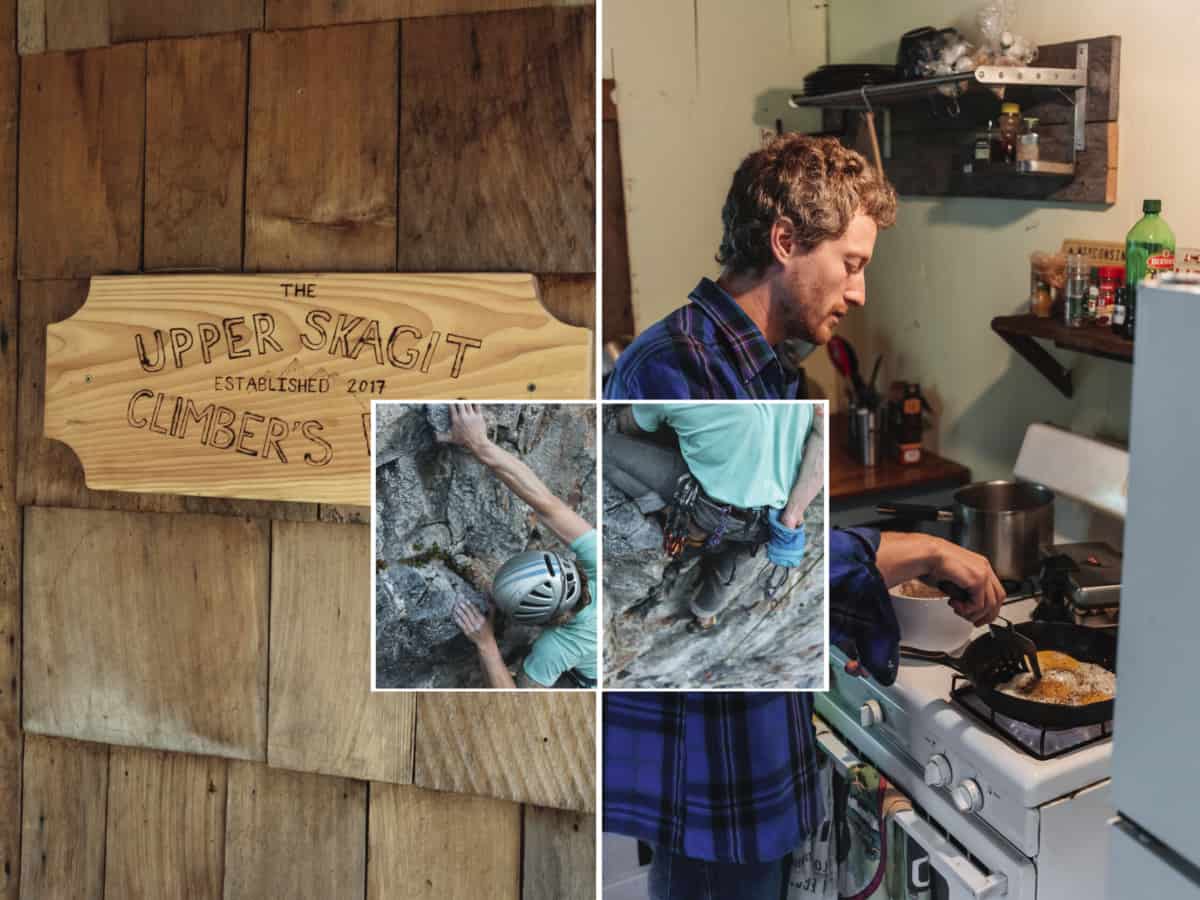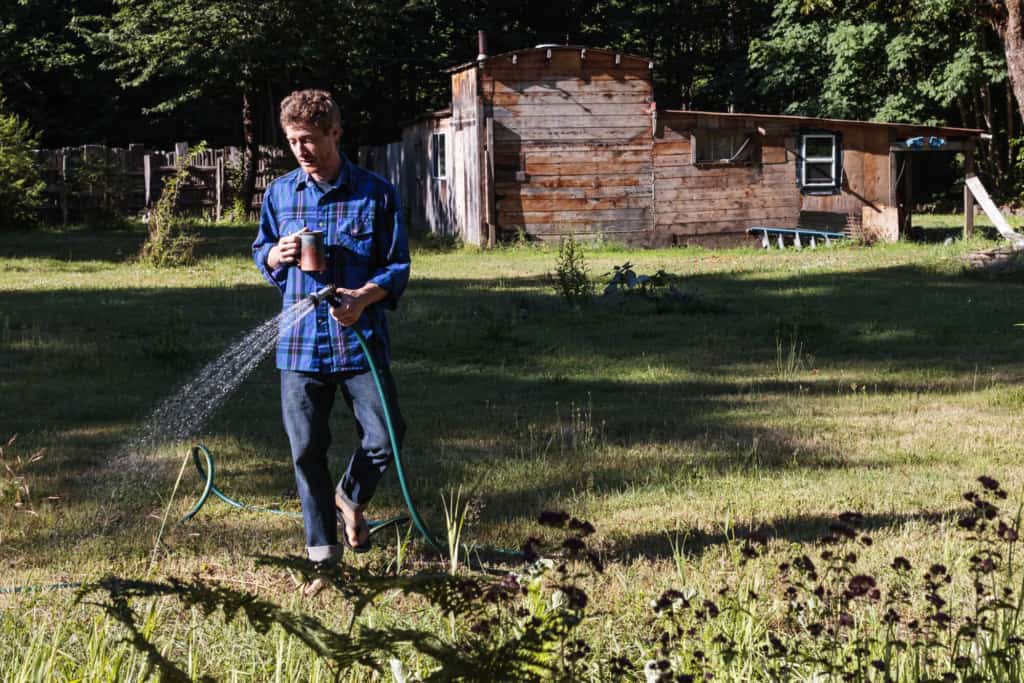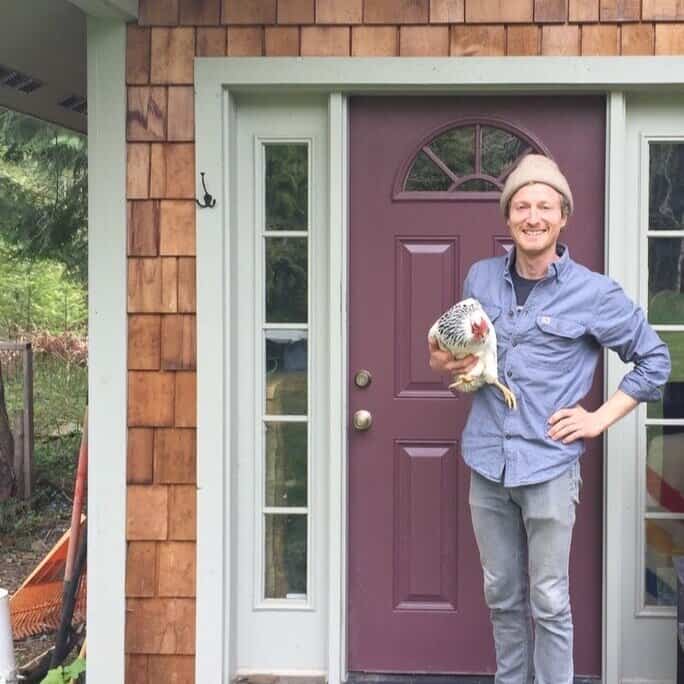
The Kinship of Climbing and Farming
I have been daydreaming about homesteading since I was a kid. Three years ago it happened; I was a couple years into my thirties, mid-career at the North Cascades Environmental Learning Center, and about to lose my apartment, I bought a 4-acre piece of land in Marblemount, Washington. On the property was one shoddy old cabin and a woodshed. Along the swift, green Skagit River, I put down roots for the first time in my adult life. Somewhere between hand-raising fluffy little chicks and battling a poultry lice infestation, I discovered that I can be as passionate about raising chickens as I am for climbing 5.12. And from the anemic looking apple trees, stuck hastily in the ground that first summer, I grew to appreciate how much care went into food by growing and harvesting it myself. Each bag of frozen berries or carton of eggs produced on the property was sustaining in an almost spiritual way.

When I moved in, the property was overgrown with weeds, blackberries, and scotch broom, and fenced off from the surrounding forest. I set to the daunting project of healing the property. There have been so many times I felt overwhelmed and defeated. Without the help of my friends, neighbors, and colleagues, I might not have made it through the first winter here. When the power failed, my old landlord rewired the whole place. I learned the basics of plumbing as I rebuilt the grey water system and replaced burst pipes to the outdoor shower.
Removing the invasive plants, piles of tires, trash, and collapsed structures, I learned that the forest will heal through subtle human input, by making space. I watched animals take up residence on the land: a mountain beaver, deer, coyotes, owls, and all varieties of song birds. I keep a little garden journal to track what I’ve planted, the wildlife I encounter, and the timing of things like last frost and first blossoms.
Similar to how my understanding of food systems has evolved as I learn more about sustainable farming, my values as a climber have shifted as I’ve become more involved in addressing access issues here in the North Cascades. I was devastated when the superintendent of the National Park closed most of the rock climbing in the area to protect nesting peregrine falcons. Life is not easy in such a remote place living in a town of 250 people, but the recreation opportunities have always tipped the scales in favor of being ‘worth it’. Closures like this are not uncommon since the peregrine falcon population became endangered in the 1970s. Climbers have used their intimate knowledge of the cliffs and their rope skills to aid falcon research. Climbers and falcons share cliff faces throughout the country, and falcon populations have rebounded significantly. This closure was unique because so much of the climbing was off-limits and the duration. I came to learn that the park biologists simply didn’t have the time to monitor falcon nests closely.
Read the rest of Calvin’s essay at farmtocrag.org/blog/2020/6/30/the-kinship-of-climbing-and-farming


Hey Calvin! What a sweet little essay to warm our hearts as we dream of tasty crags and tasty meals in in the neighborhood. You’ve got a wonderful way with words. Glad you’re putting down roots in the valley, and helping in so many ways at North Cascades Institute. This certainly isn’t how we planned to spend the spring and summer, but we’re learning as we go. Thanks for sharing!